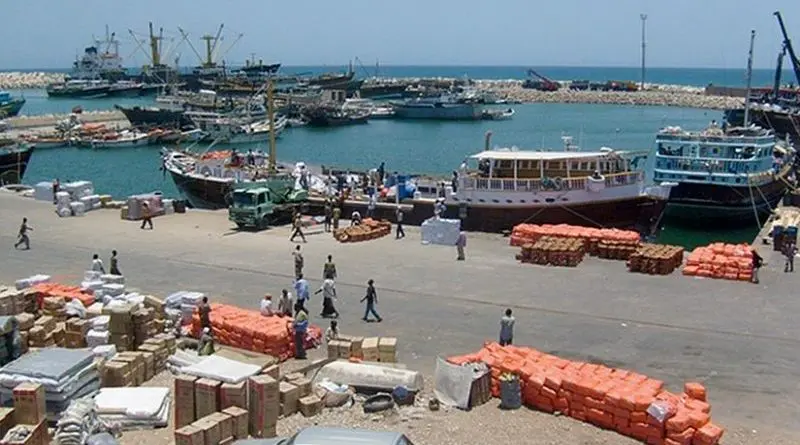Somalia connects Asia to Africa and further on to Mediterranean Europe, through Egypt’s Suez Canal. It is a major crossroads, which attracts the powers that be in the world. Despite being of such importance, its people are still unable to leverage this unique position, after some nearly four decades of constant turmoil and chaos.
It is a Gateway for Global Trade
It connects the Suez Canal through the Red Sea, Bab El Mandab and the Gulf of Aden to the Indian Ocean, a waterway which handles some 25,000 ships and some twelve per cent of global trade annually. Somalia enjoys some 3,333 kilometers of coastline consisting of beautiful beaches, many ports, both new and ruined, major populations centers, dry wadis and rivers which pour rainwater into the seas, and mountains that, at times, rise from the sea to several thousand feet up, into the sky.
A Beautiful Beacon not seen by its People
In the sixties and eighties, Somalia attracted the Ex-Soviet Union, the only other force that was balancing the colonial countries of the world at the time but soon switched sides to rejoin the democratic West from the eighties until it collapsed in 1991.
Despite its problems, including political, religious and others, involving interferences from neighboring countries such as Ethiopia, Kenya, and others, both from afar and near, Somalia still remains an attractive beacon over which major powers like the United States, China, Russia, and others compete. Of all the countries of the region, Somalia remains a critical space, which most countries hover around, making military bases in neighboring countries and in Somalia itself. The Chinese, the French and other NATO members are in Djibouti and Ethiopia, while Americans are in Djibouti and in Somalia. New rising powers like Türkiye and the United Arab Emirates have also joined the crowds militarily in the region but mostly in Somalia, the beautiful beacon, not seen by its people.
A convoluted Regional Diplomacy
The Horn of Africa is historically a Somali Peninsula, who occupy some 1.3 million square kilometers of its nearly two million square kilometers i.e. some 65% of the land space of the region. It also owns some 4100 km of its nearly 5000 kilometers of coastline i.e. about 82% of the coastline from Ras Dumeira of Djibouti (Ex-French Somaliland) to Tana River Estuary in Kenya. It houses and is home to over some seventy million Somalis. Had everything being left to develop on its own, this should have been the picture of the Horn of Africa States. However, history and European colonialism changed the natural structure of the region, when they created new states like current Ethiopia, Djibouti, Eritrea and, of course, current Somalia, although the latter is partially a creation of Somali people, after they merged Ex-British Somaliland Protectorate and Ex- Italian Somaliland, soon after independence.
Fear of a re-emergence of a united Somali people in the region drives the policies of the neighbors of Somalia, who influence, therefore, their international friends and allies against such an eventuality. This all boils down to a war against Somalia, at times diplomatic, at other times frontal and physical, and still at other times, indirect through terror groups and clan tensions, which makes the region’s diplomacy convoluted and confused.
The region’s diplomacy appears to be designed to be keeping Somalia weak and fragile, divided and broken to ensure that the dream of a Somali remains focused on the clan and not on the nation. How many has the nation lost to being brainwashed to believe in narrow clan and sometimes, just personal issues, wasting their energies on frivolous matters.
Somalia must, nevertheless, maintain, although it is difficult, good relations with the neighboring countries of Kenya, Ethiopia and Djibouti and further with Eritrea. The countries of Kenya, Ethiopia and Djibouti are home to large Somali populations, as major parts of these territories are truly Somali, which were sliced away during the colonial era of the nineteenth and twentieth centuries.
It is still strange that Ethiopia, which has already absorbed through colonial assistance the largest Somali space in the Horn of Africa, still wants and covets more including its seas today at the closing end of the first quarter of the twenty first century as represented by the illegal MoU it signed with one of the regions of Somalia. Friends of Somalia like Türkiye appear to have fallen for the fake claim for the need to have accessibility to a sea. Indeed, Ethiopia has access to the seas of five countries should it opt to use them, but they want more than just access without saying it. And Somalia and others know it.
The Future Perspectives
Its location gives Somalia a prominent position in the geopolitics of the world of today. It is not a poor country, as the current narrative on the country seems to emphasize and re-emphasize all the time. Somalia is resource-rich, and its people are active and youthful. They are currently spread over seventy per cent of the world’s recognized countries where they live and thrive as citizens. This is a major asset of the country.
Somalia is bound to be become the leader of the region when other countries of the region crumble. An irreversible process has already started in some countries already. This only helps Somalia and Somalis of the region to truly recreate the old Somali Peninsula when they alone owned and controlled the Horn of Africa. For the time being, Somalia should be working on remaking peace in the country, reconciling its populations, eradicating the imported terror groups, and exploiting the resources of the country, mostly agricultural development (Livestock and farming) fishing industries and eventually the sub-soil minerals of the country including oil and gas.

